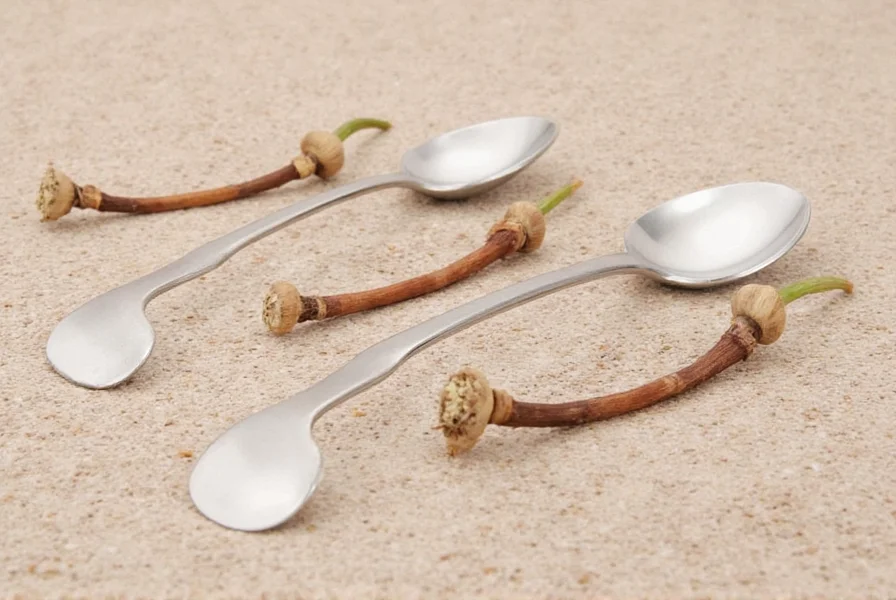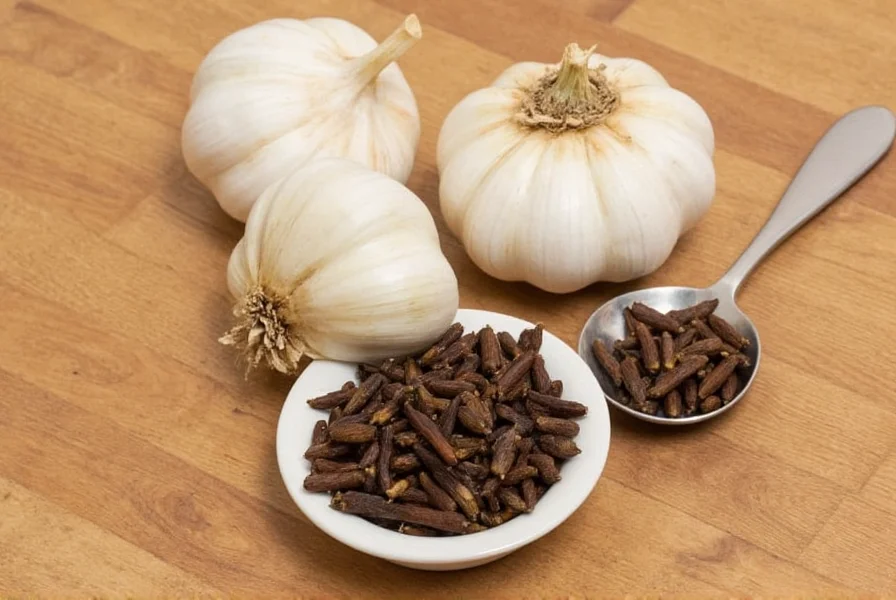Understanding garlic measurements can transform your cooking experience. Whether you're following a recipe that specifies cloves but you only have pre-minced garlic, or vice versa, knowing the exact conversion prevents flavor imbalances in your dishes. The relationship between whole garlic cloves and teaspoon measurements depends primarily on clove size and preparation method.
Garlic Clove Size Matters
Garlic cloves vary significantly in size, which directly impacts their teaspoon equivalent. Grocery store garlic typically comes in three standard sizes:
| Garlic Size | Minced Garlic Yield | Chopped Garlic Yield |
|---|---|---|
| Small (0.5" diameter) | 1/4 teaspoon | 3/4 teaspoon |
| Medium (0.75" diameter) | 1/2 teaspoon | 1 1/4 teaspoons |
| Large (1"+ diameter) | 3/4 teaspoon | 1 3/4 teaspoons |
The difference between minced and chopped garlic explains why recipes sometimes specify preparation method. Minced garlic has more surface area, releasing stronger flavor compounds than coarsely chopped pieces. When substituting, remember that 1 teaspoon of jarred minced garlic generally equals one medium fresh clove.
Practical Kitchen Applications
Professional chefs and home cooks face garlic measurement challenges regularly. When a recipe calls for “4 cloves of garlic” but you're using pre-minced, you'll need approximately 2 teaspoons. For roasted garlic—which has a milder flavor—you might use double the amount to achieve similar potency.
Storage methods affect garlic's potency too. Frozen minced garlic maintains flavor intensity better than refrigerated jarred versions, which often contain preservatives that slightly alter taste. For the most accurate conversions, measure garlic immediately after preparation, as oxidation begins changing flavor compounds within minutes.
When Precision Matters Most
Certain cuisines demand exact garlic measurements. In French cooking, where subtle flavor balances define dishes, using 1/4 teaspoon too much garlic can overpower delicate sauces. Mediterranean recipes often specify “crushed” garlic, which yields about 20% more volume than finely minced. Asian stir-fries typically use high garlic quantities, making proper conversion critical for authentic flavor profiles.
For baking applications—like garlic bread or flavored crackers—where chemical reactions affect flavor development, precise measurements become even more crucial. Bakers often find that 1/8 teaspoon of garlic powder equals one medium fresh clove, though this substitution works poorly in raw applications like salad dressings.
Common Measurement Mistakes to Avoid
Many home cooks mistakenly assume all garlic cloves are equal. A single supermarket bulb might contain cloves ranging from tiny inner pieces to large outer sections. Always measure prepared garlic rather than guessing based on clove count. Another frequent error involves confusing minced with pressed garlic—the latter produces a more concentrated flavor due to released enzymes.

When substituting jarred minced garlic for fresh, account for added liquid in commercial products. Most contain 5-10% water or citric acid, meaning you'll need slightly more volume to match fresh garlic's potency. For critical recipes, taste as you go—garlic intensity varies by season and growing conditions.
Garlic Measurement Quick Reference
Keep these conversion points handy for your next cooking project:
- 1 medium clove = 1/2 tsp minced = 1 1/4 tsp chopped
- 3 cloves fresh = 1 1/2 tsp jarred minced
- 1 head of garlic yields approximately 3-4 tablespoons minced
- Garlic powder: 1/8 tsp = 1 medium clove (use sparingly)
- Roasted garlic: double the fresh amount for equivalent flavor
Understanding these conversions helps maintain recipe integrity whether you're scaling dishes up for entertaining or adapting family favorites to your current pantry contents. The next time your recipe specifies “3 cloves” but you only have pre-minced, you'll know exactly how much to use for perfect results.
How many teaspoons is one medium garlic clove when minced?
One medium garlic clove yields approximately 1/2 teaspoon of minced garlic. This measurement assumes standard grocery store garlic with about 0.75 inches diameter. For precise cooking, especially in delicate sauces, measuring your actual minced garlic provides better results than estimating by clove count.
Can I substitute jarred minced garlic for fresh cloves in recipes?
Yes, you can substitute jarred minced garlic for fresh cloves at a 1:1 ratio by volume (1/2 teaspoon jarred = 1 medium fresh clove). However, jarred versions often contain preservatives and may have slightly milder flavor. For best results in raw applications like salad dressings, add 10-15% more jarred garlic to match fresh garlic's potency.
Why does my recipe taste different when I substitute garlic measurements?
Garlic flavor intensity varies based on preparation method and freshness. Minced garlic releases more allicin (the compound responsible for garlic's flavor) than chopped. Jarred garlic loses potency over time, while fresh garlic intensity depends on variety and growing conditions. Always taste as you cook when substituting, and remember that roasted garlic has about half the potency of raw.
How much dried garlic equals one fresh clove?
1/8 teaspoon of garlic powder equals one medium fresh garlic clove. However, this substitution works best in cooked dishes, not raw applications. Dried garlic lacks the enzymatic complexity of fresh, so use it sparingly in delicate recipes. For stronger garlic flavor in baked goods, increase to 3/16 teaspoon per clove.











 浙公网安备
33010002000092号
浙公网安备
33010002000092号 浙B2-20120091-4
浙B2-20120091-4